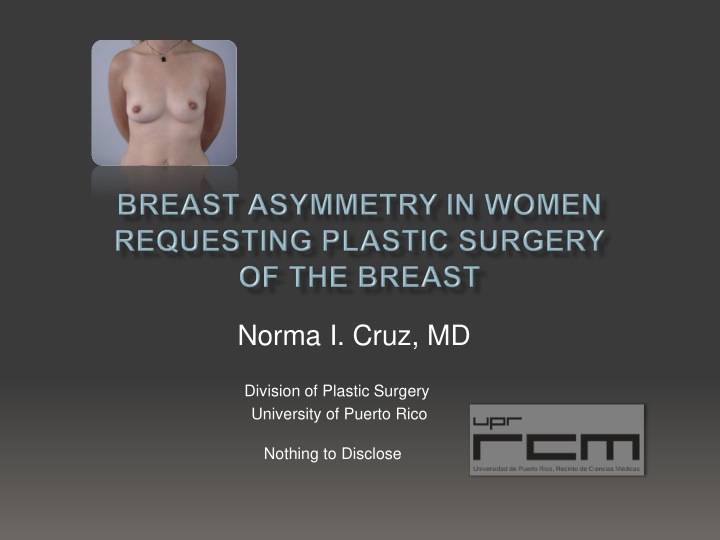



Norma I. Cruz, MD Division of Plastic Surgery University of Puerto Rico Nothing to Disclose
Is the high frequency of breast asymmetry restricted to augmentation patients?
Clinical Study Breast measurements of 244 consecutive women, who had no prior breast surgery, were prospectively recorded in a database. Comparisons were made between the right and left breast regarding symmetry of the nipple areola complex, breast mound and chest wall. 20.0 cm 22.5 cm
The patients were classified into three groups according to the presenting breast problem. Hypoplastic Breasts Macromastia Ptotic Breasts (Augmentation) (Breast Reduction) (Mastopexy & Implants)
Nipple-areola 22.5 cm 20.0 cm complex • Position • Size
Breast Mound • Volume 16.0 cm 14.5 cm • Base • Inframammary fold (IMF)
Chest wall • Pectus excavatum/ carinatum • Rib flaring
Mean Age ±SD Hypoplastic breasts 31±10 Macromastia 33±13 37 ± 11 Ptotic breasts The mean age of the group as a whole was 34 ± 11 years.
Asymmetries Hypoplastic Macromastia Ptotic P (n=106) (n=80) (n=58) Nipple-areola 54% 59% 51% >0.05 Breast Mound 45% 46% 43% >0.05 Chest wall 12% 11% 10% >0.05 Overall 91% of the women had at least one type of preoperative breast asymmetry.
Breast asymmetries occur in the majority of women and these findings are similar among the different groups. Since they are often unaware of the problem, they should be informed of the presence of the asymmetry and how this may affect the surgical outcome
Recommend
More recommend